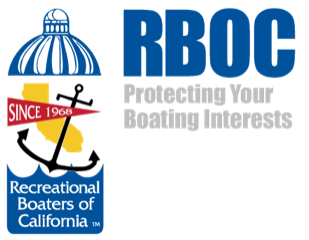RBOC has submmitted formal comments to the U.S. Environmental Protection Agency [USEPA’s) regarding its Draft Aquatic Life Ambient Estuarine/Marine Water Quality Criteria for Copper – 2016, noting a number of significant issues and settting forth recommendations to improve the important and precedent-settting document.
This issue is important to boating. From recreational boats in the water for a season to commercial ships that are in the water year round, antifouling paint on the underwater part of the boat is fundamental to the proper maintenance and performance of almost all watercraft. The uncontrolled growth of marine organisms on boats significantly degrades performance, increases fuel consumption, contributes to the spread of aquatic invasive species and can even lead to a vessel sinking in extreme cases.
Many antifouling paints contain cuprous oxide, a form of copper, as the licensed pesticide that is their primary active ingredient. These antifouling paints, approved by the USEPA, are designed for the copper to gradually leach into the water from the boat. Paints containing copper are currently the most effective, affordable and available antifouling products for all vessels, including recreational boats.
The USEPA has identified several California water bodies as impaired by copper [303(d) listed].
This has led Regional Water Quality Control Boards [RWQCBs] with authority over San Diego’s Shelter Island Yacht Basin and Los Angeles’s Marina del Rey to set Total Maximum Daily Loads [TMDLs] for copper. In order to meet the TMDLs, they have proposed to ban the use of copper antifouling paints on recreational boats. Newport Harbor is considering setting a copper TMDL as well, with the possibility of a copper antifouling paint ban being a likely outcome.
The USEPA has established a toxicity standard of dissolved copper in salt water of 3.1µg/L. Within this standard, however, is the acknowledgement that site-specific testing of water bodies should be performed to determine if local water chemistry or other factors mitigate the toxicity of copper. The USEPA currently recognizes only one test protocol for salt water, the Water Effects Ratio [WER], an extremely laborious and costly test. In fact, the WER test was conducted in San Francisco Bay and while copper levels in the area were three times greater than the 3.1µg/L standard, the results showed no toxic impacts on the marine environment. This led the USEPA to remove all of San Francisco Bay from the 303(d) list of impaired water bodies for copper.
Several of the current California watershed management TMDL plans assume that the major source of copper is from recreational boats and use copper antifouling paint bans as the proposed method to reduce the amount that enters the water in the basins. However, since dissolved copper rapidly binds with organic material most of its toxic effects are rendered inert. Use of the BLM would determine what actual level of copper must be reached in a particular water body before toxicity to benthic organisms occurs.
RBOC endorses and concurs with the comments of the Copper Development Association Inc. [CDA] and the International Copper Association, Ltd. [ICA].
RBOC has encouraged the USEPA toapprove the use of a saltwater Biotic Ligand Model [BLM] for copper. RBOC shares the concerns of the CDA and ICA regarding several of the approaches, assumptions, and data used in the derivation of the draft estuarine/marine criteria for copper, as well as the recommendations to improve this important and precedent-setting document. These include:
- Because the BLM is highly sensitive to dissolved organic carbon (DOC), the USEPA should only use copper toxicity data from studies in which reliably-measured DOC concentrations were reported to derive the criteria.
- Given the extraordinary richness of the copper toxicity database, the USEPA should not derive the criteria using generalized approaches that are more appropriate for data-poor substances.
- USEPA should be consistent in its use of default/reference-water chemistries and base the values it selects on data that characterize the most likely environments in which the estuarine/marine criteria will be applied.
- To assist the states in adopting its recommendations, USEPA should take full advantage of this opportunity to provide additional guidance on the implementation of the BLM-based approach.
RBOC joins with the CDA and ICA in urging the USEPA to fully consider these comments because they pose the potential to significantly increase confidence in the criteria, which will, in turn, increase the likelihood of their widespread adoption.
